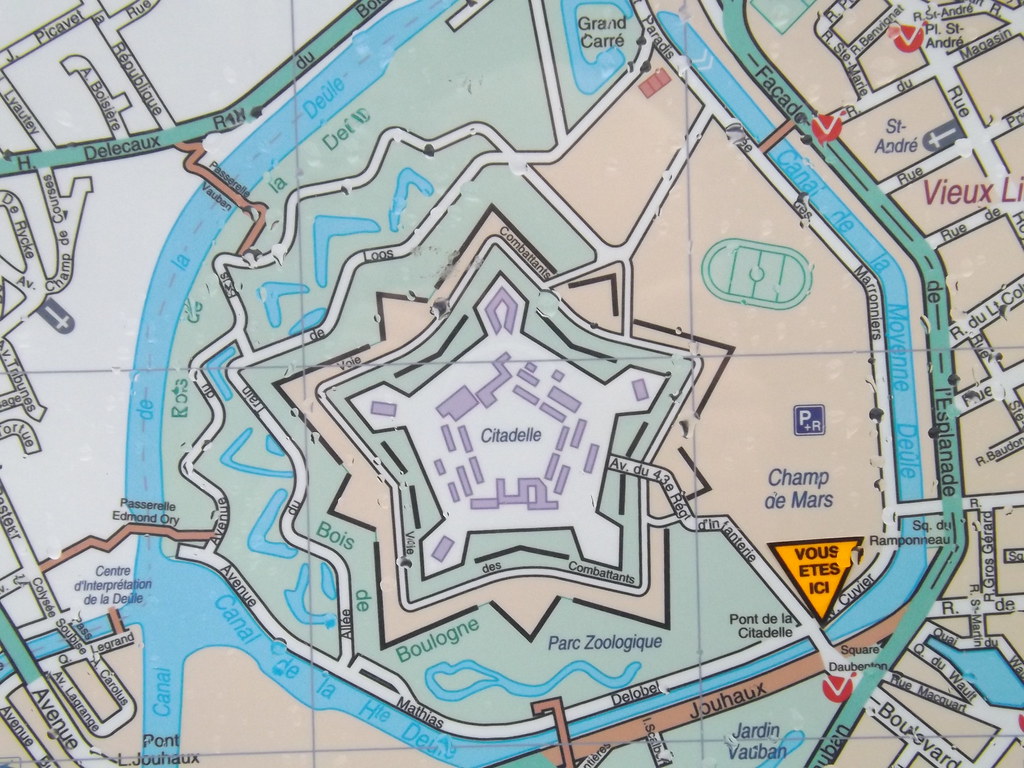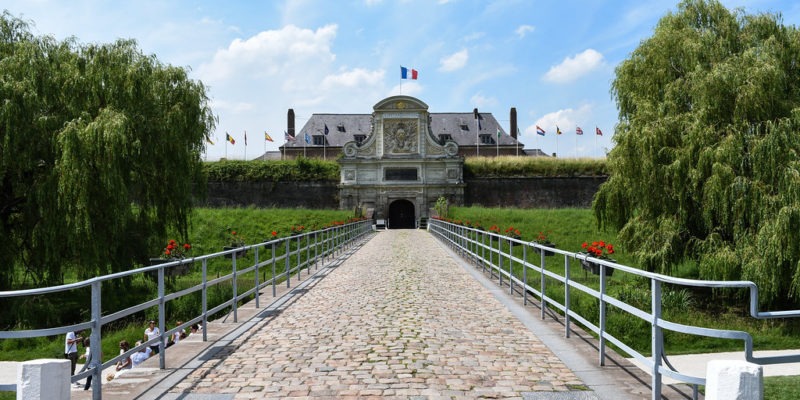The Citadelle de Lille, also known as “La Reine des Citadelles”, is an architectural treasure from the era of Louis XIV.
Designed by the famous military engineer Sébastien Le Prestre de Vauban, who also created the Citadelle d’Arras, it represents one of the most impressive achievements of 17th century military architecture.
History of the Citadelle
Construction of the Citadelle de Lille began in 1667, immediately after Louis XIV captured Lille in the Treaty of Aix-la-Chapelle. The aim of the citadel’s construction was to reinforce the defense of the city, which was a strategic point in the Nord region, and for the protection of the French border. Design and construction were entrusted to Sébastien Le Prestre de Vauban, the master of military architecture at the time. Vauban imagined the Citadelle as a veritable fortress, with five bastions and a star-shaped layout to maximize firing ranges. It was conceived as a veritable machine for defending the city, capable of withstanding a siege while allowing good mobility within its walls. This masterpiece of military engineering stood the test of time for over three centuries, playing a key defensive role in major conflicts such as the War of Spanish Succession in the early 18th century. Over the years, the Citadelle has been modernized and adapted to new technologies and military strategies. Despite these adaptations, it still retains its original form and basic structure, making it a living testimony to French military history.
Today, the Citadelle of Lille houses the NATO-certified headquarters of the Rapid Reaction Corps-France, illustrating its continuing role in defense and security. It is one of the few citadels in France still in active military service. Its current role echoes its original function envisaged by Vauban, demonstrating the durability and continuing relevance of its design and conception.
Architecture of the Citadelle
The Citadelle de Lille is a remarkable example of the“star” architecture popularized by Vauban. This configuration, also known as bastioned fortification, was the most advanced defense concept of its time. It responded to the need to protect the walls of a fort from direct fire, while offering a clear field of vision and fire to the defenders. The star shape of the Lille Citadel, with its five protruding bastions, enabled effective control of the surrounding area. Each bastion was designed to allow crossfire, making the approach of a potential enemy particularly dangerous. This configuration gave the defenders the ability to monitor and control all points of approach, maximizing the fort’s security.
The bastions, the centerpieces of this construction, were linked by curtain walls, which formed the main perimeter of the fortification. These walls were generally reinforced and could house casemates, living quarters or storage areas for soldiers and military equipment. The Citadel was also surrounded by a wide moat, providing an additional obstacle to enemy forces. This ditch was further protected by a counterscarp, a wall designed to reinforce the ditch and provide a second bulwark against enemy attacks. The presence of the ditch and counter-escarp amplified the citadel’s defenses and contributed to its reputation as impregnable. It’s worth mentioning that the architecture of the Lille Citadel was not limited to its defensive design.
Within its walls were a series of buildings (barracks, powder magazine, arsenal) organized around a vast parade ground. Vauban conceived the Citadelle as a veritable fortified town, capable of supporting a garrison in the event of a prolonged siege. A plan-relief reconstruction of the Lille Citadel can be seen at the Palais des Beaux-Arts in Lille.

Map of the Citadelle of Lille
Visit the Citadel
The Citadelle de Lille is open to the public and attracts thousands of visitors every year, eager to explore this exceptional witness to France’s military history. It offers a unique opportunity to discover the history and architecture of the time of Louis XIV, and much more besides. A visit to the Citadelle is a real plunge into the past. Visitors can begin their tour with a stroll along the citadel’s imposing outer walls, offering impressive views of the bastions and star-shaped structure. Inside, visitors can admire historic buildings such as the barracks, powder magazine and arsenal, all built in the typical style of the Vauban era. Guided tours offer in-depth information on the history of the Citadelle, the lives of the soldiers who lived there and the different military strategies employed over the centuries. These tours are an excellent opportunity to learn more about the Citadelle’s history and understand why it has been dubbed“the Queen of Citadels“.
In addition to its rich historical and architectural heritage, the Citadelle of Lille is surrounded by vast green spaces, making it an ideal place for a relaxing day outdoors. The Parc de la Citadelle is much appreciated by the people of Lille for its pleasant natural setting, playgrounds and walking trails.
Geographical location of La Citadelle
C.L.
